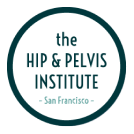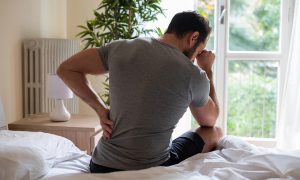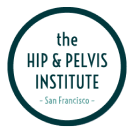Hip pain from sleeping on your side is a common but often overlooked issue, particularly for individuals aged 40-70 who are experiencing joint discomfort, arthritis, or recovering from hip surgeries. While side sleeping is one of the most natural and comfortable positions for many, it can inadvertently place excess pressure on the hips, exacerbating pain and disrupting sleep. This ongoing discomfort can lead to restless nights, reduced mobility during the day, and a decrease in overall quality of life. Understanding why side sleeping causes hip pain and exploring effective, lesser-known strategies for relief can significantly improve sleep quality and help individuals manage their condition without relying solely on medication or invasive treatments. In this article, we’ll explore practical solutions, from simple positioning adjustments to targeted therapies, for those struggling with hip pain caused by side sleeping.
Why Sleeping on Your Side Can Cause Hip Pain
Sleeping on your side can place significant pressure on the hip joint, especially when the body’s alignment isn’t optimal. As weight is distributed unevenly, the lower hip bears the brunt of this pressure, leading to inflammation in the soft tissues, cartilage, or even the bone itself. For individuals with preexisting conditions like hip arthritis or bursitis, the joint’s ability to absorb this pressure is further compromised, intensifying pain. Additionally, the lack of proper support for the spine and pelvis can cause misalignment, which increases stress on the hip joint. This imbalance might also exacerbate muscle tightness and strain in the hip flexors and glutes, leading to discomfort even after waking. Over time, the cumulative effect of side sleeping can worsen existing joint issues, creating a cycle of pain and restlessness that affects both sleep and daily activities.
Best Sleeping Positions to Relieve Hip Pain
To alleviate hip pain while sleeping on your side, it’s crucial to adjust your position for optimal alignment. Placing a firm pillow between your knees can help keep your hips aligned and reduce pressure on the lower joint. This simple adjustment redistributes weight, preventing excessive strain on the hip. Another helpful position is sleeping with a slight twist, where you angle your body slightly forward or backward, allowing for more even distribution of weight across both hips. If side sleeping remains uncomfortable, consider transitioning to a back-sleeping position with a pillow under your knees. This position helps maintain the natural curve of your spine and reduces the load on your hips. For individuals with more severe hip pain, incorporating a body pillow can provide additional support by stabilizing your posture, preventing constant shifting that might aggravate pain throughout the night.
Pain Management Strategies for Side Sleepers
- Pillow Placement for Joint Alignment: Positioning a pillow between your knees can significantly reduce hip pressure by aligning your pelvis and spine. This small adjustment helps keep your hips in a neutral position, preventing them from tilting unnaturally, which is a common cause of pain. For enhanced comfort, experiment with different pillow types, such as memory foam or wedge pillows, which can provide better support than traditional options.
- Use of Specialized Mattress Toppers: A softer mattress topper can make a big difference for side sleepers with hip pain. Toppers made from materials like memory foam or latex contour to the body, reducing pressure on sensitive areas of the hip joint. Unlike a firm mattress that may increase pressure, a plush topper evenly distributes body weight, reducing discomfort.
- Targeted Topical Treatments: Topical creams or gels containing menthol, capsaicin, or arnica can provide localized relief by reducing inflammation and numbing pain directly at the hip joint. Unlike oral pain relievers, topical treatments don’t interfere with the body’s internal healing processes and offer immediate relief, making them ideal for nighttime use.
- Gentle Pre-Sleep Stretches: Incorporating gentle hip stretches before bed can loosen tight muscles, reducing tension around the hip joint. Stretching exercises like the pigeon pose or hip flexor stretches help to lengthen the muscles, improve flexibility, and alleviate stiffness that may worsen overnight.
- Heat and Cold Therapy: Using a warm compress or heating pad before bed can help relax tight muscles and ease inflammation, while an ice pack can be applied during the night for ongoing relief. Alternating between heat and cold therapy can also reduce swelling and enhance blood circulation to the area.
When to Seek Professional Help for Hip Pain
While many cases of hip pain from sleeping on your side can be managed at home, certain symptoms signal the need for professional intervention. If pain persists despite trying self-care measures like repositioning or using pillows, or if it worsens over time, it’s crucial to consult a specialist. Severe, sharp, or constant pain, particularly if it radiates down the leg, may indicate an underlying condition like a hip labral tear or nerve impingement. Additionally, if you experience swelling, bruising, or difficulty moving the hip joint, it’s important to seek medical attention. Pain that interferes with daily activities, such as walking or climbing stairs, should also be evaluated. A healthcare provider may recommend imaging tests like X-rays or MRIs to identify structural issues. For those recovering from surgery, hip pain that returns or intensifies could suggest complications, making it vital to get professional guidance early to avoid further damage.
Exercises and Stretching for Hip Pain Relief Before Bed
- Hip Flexor Stretch: Lie on your back with one knee bent and the opposite leg extended. Gently pull the bent knee toward your chest while keeping the extended leg flat on the floor. Hold for 30 seconds, then switch sides. This stretch helps relieve tension in the hip flexors, which can become tight from prolonged sitting or poor sleep posture.
- Piriformis Stretch: Lie on your back with both knees bent. Place your right ankle over your left knee and gently pull the left thigh toward your chest. Hold for 20-30 seconds and repeat on the other side. This stretch targets the piriformis muscle, which can contribute to hip pain and discomfort when tight.
- Figure Four Stretch: While lying on your back, cross your right ankle over your left knee and gently pull the left thigh toward you. This stretch targets the hip abductors and helps relieve pressure from side sleeping, allowing for greater mobility and less pain.
- Seated Hip Rotations: Sit upright on the edge of a chair and place your feet flat on the ground. Cross one leg over the other and gently rotate your hip outward. Hold for 10-15 seconds and switch sides. This exercise helps improve hip flexibility and relieve stiffness before bed.
- Bridge Exercise: Lie on your back with your knees bent and feet flat on the floor. Lift your hips off the ground, squeezing your glutes at the top. Hold for 5 seconds before lowering. Repeat 10-15 times. This strengthens the glute muscles and relieves tension in the hips, supporting better alignment while sleeping.
Final Thoughts
Managing hip pain from side sleeping doesn’t have to be a challenge. By making small adjustments to your sleeping position, incorporating stretches and exercises into your nightly routine, and exploring alternative pain management options, you can significantly improve your comfort and sleep quality. However, if pain persists or worsens, it may be a sign of a more serious condition requiring professional evaluation. At SFHips, we specialize in providing personalized care to help you manage hip pain effectively and improve your overall joint health. For a comprehensive consultation, visit us or call (415) 530-5330 to schedule an appointment today.









